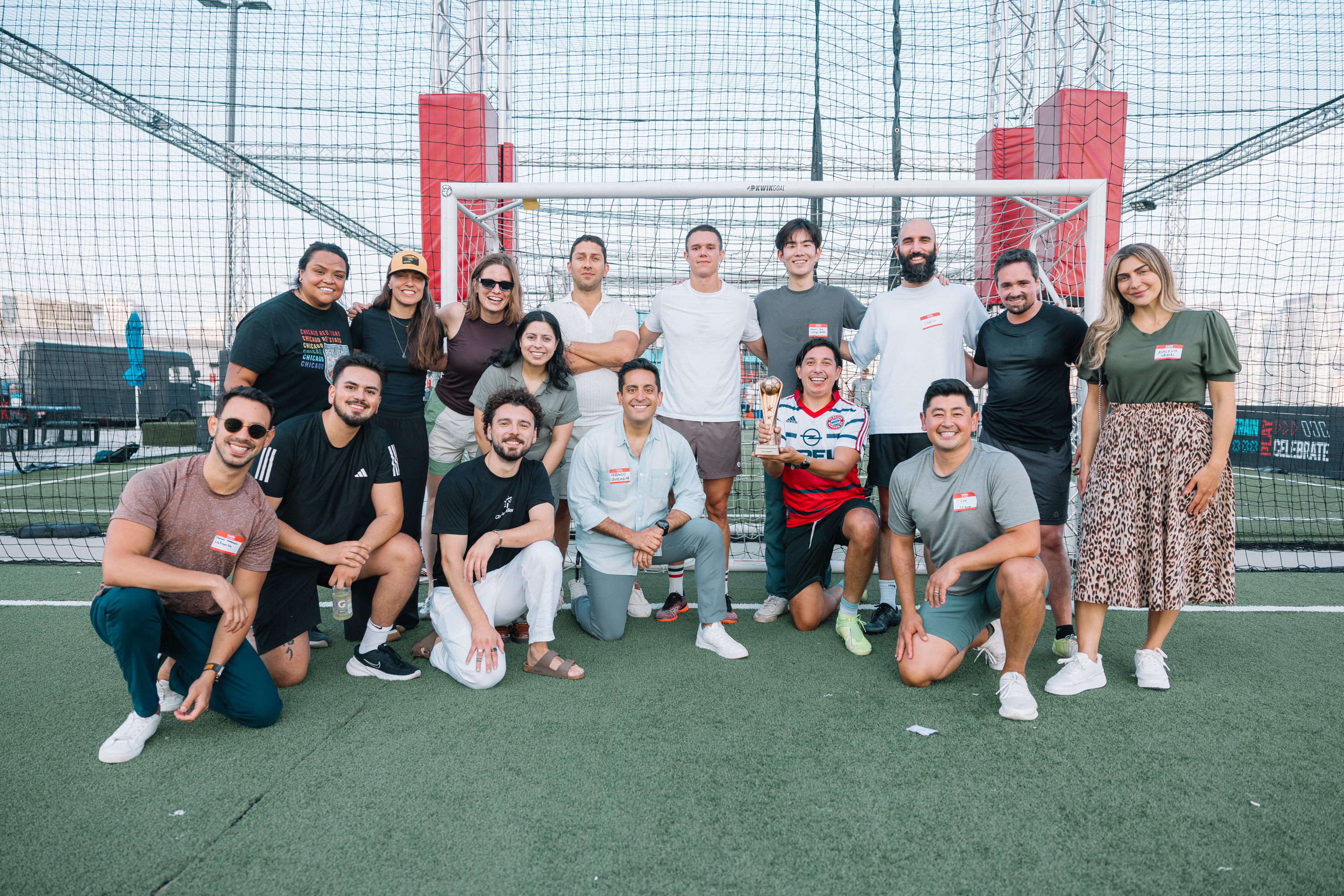Don't Miss a Step. Subscribe to our Newsletter
"You need at least 30 leads, hot leads, to get one live client.”
Government. Financial services. Education systems. Some industries and sectors are notoriously painful to sell into and Eric Alvarez, the founder of Grapefruit Health, a startup solving the massive staffing shortage in healthcare by matching clinical students with open positions, argues that the hardest business configuration to be successful in is B2B tech-enabled healthcare services.
Navigating sales to notoriously difficult industries has prevented startups from bringing innovations to their markets, but it also represents an opportunity for those who can crack the challenge. We talked with Eric about how he’s navigated bureaucratic mazes to understand the unique demands of selling into health systems and his recommendations for other founders working to break through to hard-to-sell customers.
Industry Experience is a Massive Shortcut

Eric’s career in healthcare started over a decade before his founding of Grapefruit Health. Following his service in the United States Air Force, Eric pursued a Master's in Healthcare Administration from Rush University, a top-three program in the industry. He now serves as an adjunct faculty member at the school. These experiences at Rush, both as a student and faculty member, give him access to hundreds of students who eventually work in healthcare systems worldwide and represent potential customers of Grapefruit, a unique top-of-funnel sales advantage for him as a founder.
Following his graduation from Rush, Eric landed a role at the University of Chicago Medicine, managing nearly 150 FTEs, and eventually went on to a similar position at Northwestern University. These positions allo him to learn healthcare systems from the inside. “Literally, I used to be the target client of [what would eventually become] Grapefruit.” Learning on another organization’s dime before you start your own business is solid advice from Eric—often, founders struggle to reach customers with purchasing authority due to a lack of understanding of how systems work and how their clients evaluate new technologies.
Following nearly half a decade in industry-leading health systems, Eric pivoted to startups. “It’s in my blood. I had my first startup at 13, doing oil changes in people’s homes. I had a horrible idea that became a failed smartphone app. I started a bike event company. I was always going to start something. The provider side of medicine is hyper-bureaucratic if you’re an entrepreneur in your soul. I always knew I would get out into something that moved faster,” Eric recalls about his jump to the startup ecosystem. He initially joined the team at MATTER, a healthcare incubator in Chicago, where he supported startups and was quickly recruited by one of their companies, Fibroblast, where he was COO for five years, overseeing growth from 1 to 25 employees, selling to their very first clients, and eventually exiting through acquisition. He credits his experience at Fibroblast, a SaaS solution for referral management within medical groups, with rounding out his insider knowledge of the industry, “That startup is where I really learned to sell. Going from something that is just an idea and actually getting it in the end-user’s hands where they are using the product and finding value. I came into my own and now consider myself an expert in healthcare because I’ve been exposed to virtually every side of it.”
Lead Generation is like Planting Seeds and Waiting for them to Bloom
Eric credits the network he’s built over the years as his superpower. He invests time in the relationships he’s made as a student and faculty member at Rush University, in the medical systems he’s worked in, and with his investors (including pre-seed investors like Hustle Fund and LongJump). He does favors for these contacts without expecting anything to come out of them or knowing that he may not hear from them for years. “I can talk about this until I’m blue in the face. This is a numbers game, whether it’s finding clients or your next investor, so non-technical founders need to work on being extroverted and charismatic.”
Eric leverages LinkedIn heavily, sometimes offering encouraging words on a post, other times helping contacts land their next job. He also looks for opportunities to discover commonalities and pointing to a Marián Hossa jersey on his wall, Eric says, “You wouldn’t believe how many people open up conversations about the Blackhawks, a team I love and can talk about endlessly, because of this jersey.” He’s also proactive in thinking about those relationships he’ll need in the future - for the better part of the last year, knowing he’ll eventually be raising another funding round, Eric’s dedicated himself to setting up short meetings with up to five investors a week, often cold connections at the time, so he has a warm network once that round kicks off.
Eric returns to all of these efforts being a numbers game, “If you’re starting from a small network, set a goal of meeting one person a day. That’s five a week. Maybe all five are going to be zero value-add, but eventually, you’ll land on the right person—either you can help them or they can help you—and this serendipitous amazing thing happens that leaves you both feeling great that you’ve connected.”
Find Your Champion. Then Make Their Life Easy
In most organizations, especially those that are large and bureaucratic, there’s likely no single decision-maker on purchasing. Eric recommends finding your champion, an internal sponsor that you are communicating with about your solution because it will make their job easier. “You need this person to like you, both personally and professionally. I talk about my kids, what I’m up to on weekends, and what they are into,” Eric says about his process. This is key because you don’t have the control to speed up procurement, but your relationship with a champion is what helps keep you in that process and gives you a friendly point of contact to check in with.
Even with an internal champion, founders must understand that they will likely never be the number one priority of their target customer, and it’s their job to stay top of mind and make things as easy as possible to grease an organization’s internal wheels. Eric recommends founders:
- Document meetings for their clients and send a well-written, forwardable email for their champion to push through the organization with digital assets and talking points. “If you think they are going to have a sales meeting with you and document all of your [value propositions] themselves, you are sorely mistaken,” Eric says. This email should include:
- A recap of your company
- A reminder of how you’ve helped other clients (if you already have them)
- Recommended next steps (for Grapefruit, this is usually a request for a bigger meeting with others in the organization that can benefit from the product or have procurement authority)
- Digital assets like a deck and links to your website or case studies
- Set up a system for follow-up. Eric pings leads weekly, avoiding Mondays and Fridays, checking in on how things are going. “I will never stop pinging a lead until I hear them say ‘stop’. You worked hard for that lead, so why let them go? Pinging takes a few seconds at most and there are automation options out there, too. I have closed deals on the 30th+ ping. Nothing moves faster than weekly in healthcare land, so I don’t agree with the approach of pinging every two days. I’ve set my cadence to check-in every Tuesday morning,” he says. What Eric’s talking about is polite persistence, something twice-acquired founder and VC Mark Suster details well in One of My Most Frequent Pieces of Advice: Be Politely Persistent
- Know your procurement bottlenecks. In healthcare, one of these hurdles is the master service agreement (MSA), which lays out big terms and can be up to 25 pages long. Drafting of an MSA is often the heaviest legal lift in a deal. Eric’s smoothed the MSA bottleneck by working with his attorney to have a template MSA ready for the legal teams of their clients, as well as their own statement of work (SOW) and business associate agreement (BAA, which is a healthcare-specific agreement around the handling of protected health information). Having these on hand often means that health system legal teams aren’t going to have to spend extensive time modifying their own agreements, effectively making things easier for his clients during a painful part of the sales process.
Eric Alvarez's journey is an example of the power of industry expertise and strategic networking in navigating the challenges of selling B2B solutions into enterprise health systems. From the military and graduate school to the frontline of healthcare administration, and finally to founding his own startup with Grapefruit Health, Eric illustrates that persistence and innovation wins. Our interview with Eric offers valuable lessons for founders seeking to break into hard-to-sell markets, emphasizing the importance of industry knowledge, identifying champions within target organizations, and proactive problem-solving in overcoming obstacles and driving success in B2B sales.
Ready to Take The leAp?
Community
Contact
© 2025 | Site Built By PNW



.png)
